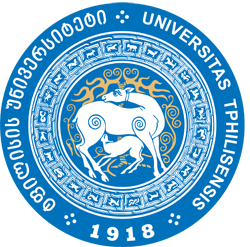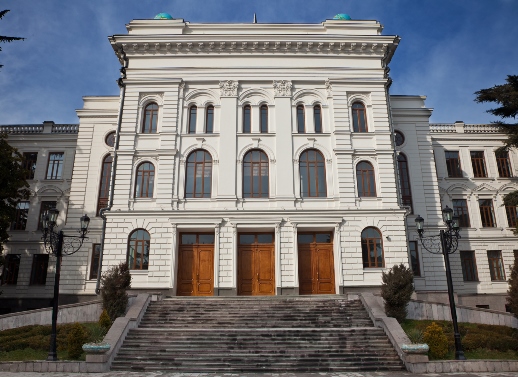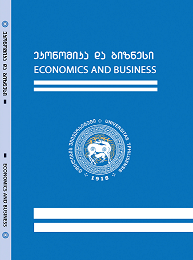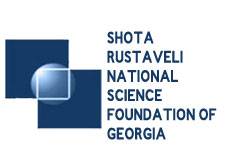
Referential and Reviewed International Scientific-Analytical Journal of Ivane Javakhishvili Tbilisi State University, Faculty of Economics and Business

From Traditional Agriculture to Industrial (Digital) Agriculture
https://doi.org/10.52340/eab.2024.16.01.03
The Industrial Revolution led to great changes in the world. New technologies were being developed and introduced at a rapid pace, forever changing the way people lived and worked. One of the areas that underwent significant changes due to the Industrial Revolution is agriculture, which is one of the oldest and most traditional form of use of nature and land by humans. Making changes to the agriculture became possible only under the influence of industrial revolutions. Still, even in the early stages, they were not able to radically and visibly transform this important branch of the economy.
One of the most visible effects of industrialization on agriculture is the introduction of new technologies. The interdependence between traditional agriculture and modern industrial sectors of the economy is crucial for the overall economic development of the country. The growth of the agricultural sector depends on the growth of industrial demand for agricultural products. Similarly, the growth of the industrial sector depends on an increase in the purchasing power of the agricultural sector for industrial products and an increase in the supply of raw materials for processing. Many developing countries have realized the importance and role of the agricultural sector's industrialization in the country's economic development which ensures food security, optimizes foreign trade balance and raises the welfare of population.
The industrial revolutions transformed the agricultural sector from traditional agriculture to mechanized agricultural production and modern precision farming. The fourth industrial revolution stimulated the development of new technologies and methods that changed the global production system. Industry 4.0 has transformed agricultural operations using cyber-physical systems, the Internet of Things, artificial intelligence and machine learning, big data analytics, and the integration of cloud technology into agricultural machinery. Agriculture 4.0 is a digital model of agricultural production, which is based on a highly efficient production process and is the result of long-term technological development. The paper aims to analyze and describe the innovations of Agriculture 4.0, its origin, and characteristics. The paper discusses the current state of the industrial agriculture (industrial agricultural production model, production process, supply chain) sector's strengths and weaknesses. The paper presents the opportunities and challenges of digital agriculture, emphasizing its importance in solving several pressing issues in industrial agriculture.
Innovation and technology are essential to maintaining competitiveness in the agricultural sector. Digitization of the agro-food sector creates a highly productive, predictable, and adaptable system to changes. Which, in turn, leads to an increase in food security. Industrial agriculture significantly increases productivity, but at the same time, monoculture and intensive animal husbandry, which is the main production model of modern industrial agriculture, cause great damage to the environment, public health, and animal welfare. In addition, although agricultural production is mechanized and computerized, the lack of digitization and intelligent systems is a major obstacle that hinders the possibility of improving automation. The agri-food supply chain is not managed wisely at the current stage. To solve the mentioned issues, it is necessary to integrate the innovative technologies of the emerging industry 4.0 in agriculture.
At the same time, agricultural technologies are also evolving towards a new paradigm – "Agriculture 5.0", which should better combine science and technology with social equity and sustainability.
The development of bio-economy in the concept of Society 5.0 implies that the most promising areas of agricultural development are the optimal use of resources, mass personalization and individualization of the final product, the development of creative product differentiation, and the introduction of autonomous automatic decision-making systems based on robotic complexes. The absence of communication barriers in human-machine interaction, including the use of bioinformatics technologies, will allow us to focus on increasing heuristics for innovative solutions in agriculture.
References:
• Ye Liu, Xiaoyuan Ma, Lei Shu, Gerhard Petrus Hancke, Adnan M, Abu-Mahfouz (2020). "From Industry 4.0 to Agriculture 4.0: Current Status, Enabling Technologies, and Research Challenges", DOI:10.1109/TII.2020.3003910.
• Isabela Romania de Alcantara, João Guilherme Araújo Schmidt, Carlos Eduardo de Freitas Vian, Guilherme Belardo (2021). "Agriculture 4.0: Origin and features in the world and Brazil", DOI: 10.22167/2675-441X-20210564.
• Ragazou K., Garefalakis A., Zafeiriou E., Passas I. (2022). "Agriculture 5.0: A New Strategic Management Mode for a Cut Cost and an Energy Efficient Agriculture Sector" DOI:10.3390/en15093113.
• Baryshnikova N., Altukhov P., Naidenova N. and Shkryabina A. (2022). "Ensuring Global Food Security: Transforming Approaches in the Context of Agriculture", DOI:10.1088/1755-1315/988/3/032024.
• Zambon I., Cecchini M., Egidi G., Grazia M. Saporito, Colantoni A. (2019). "Revolution 4.0: Industry vs. Agriculture in a Future Development for SMEs", DOI.org/10.3390/pr7010036.
• Peter P. Groumpos (2021). "A Critical Historical and Scientific Overview of all Industrial Revolutions", DOI:10.1016/j.ifacol. 2021.10.492.
• Rohan R. Naikwade, Vishwesh S. Joshi, Saurabh B. Hirwe, B.K.Patle, N.D. Pagar (2021). "Agriculture 5.0: Future of Smart Farming", MITADT School of Engineering,
• FAO Regional Conference (2020). "Digital Innovation for promoting Agriculture 4.0 in the Near East and North Africa", https://www.fao.org/3/nd262en/nd262en.pdf.
• FAO (2020). "Realizing the Potential of Digitalization to Improve the Agri-food System Proposing a New International Digital Council for Food and Agriculture", http://www.fao.org/3/ca7485en/ca7485en.pdf.
• Hrustek L. (2020). "Sustainability Driven by Agriculture through Digital Transformation", DOI.org/10.3390/su12208596.
• Koguashvili P. Archvadze I. (2020). – sakartvelos soplis meurneoba mimdinare gamotsvevebis tsinashe“ ["Georgia’s Agriculture Faces Actual Challenges" Economics and Business, N3.] in Georgian
• Kharaishvili E., Koghuashvili P. Shengelia N. (2024). "traditsiulidan chkvian soplis meurneobamde: ciprizaciis upiratesobebi, gamotsvevebi da perspektivebi" ["From Traditional to Smart Agriculture: Advantages, Challenges and Prospects of Digitization". Innovation Economics and Management, Vol. 11, No. 1.] in Georgian
Keywords: Industry 4.0, agriculture 4.0, digitalization, industrial agriculture, precision farming.
JEL Codes: O13, O14, Q10, Q13









